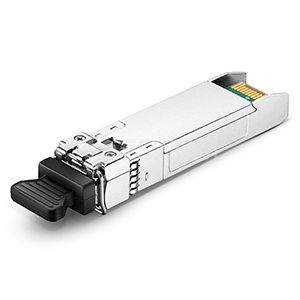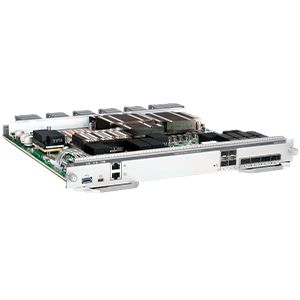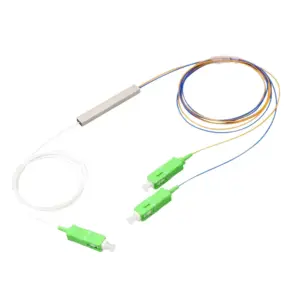Fiber-optic access networks are showing a new development trend. This article will focus on comparing the two access technologies, 10G PON and 10G EPON. We first define the basic characteristics and main application scenarios of 10G PON. Next, we introduce the basic characteristics and main application areas of 10G EPON.
Then, we compare the differences between the two in terms of physical layer technology, transmission protocol, and service quality. Finally, we analyze the advantages and disadvantages of 10G PON and 10G EPON from the perspectives of bandwidth, cost, deployment, etc., and explain the applicability of their respective application scenarios.
What is 10G PON (Passive Optical Network)
10G PON (10 Gigabit Passive Optical Network) is a high-bandwidth passive optical network technology mainly used to provide high-speed Internet services. It supports downstream and upstream rates of up to 10 Gbps, which is suitable for the needs of home and enterprise users. Through optical fiber connection, no intermediate power supply equipment is required, reducing operating costs and maintenance complexity. 10G PON is widely used in fiber-to-the-home (FTTH) and other broadband access scenarios, promoting the development of broadband networks.
1. Basic features of 10G PON:
10G PON is a high-speed fiber access solution based on passive optical network (Passive Optical Network) technology. Its main features include:
- Transmission rate:
- Both upstream and downstream support up to 10Gbps transmission bandwidth.
- Topology:
- Adopts tree/star passive optical fiber distributed topology.
- Passive devices:
- Equipment such as optical splitters in the network are passive devices and do not require power supply.
- Encapsulation protocol:
- Standard protocols such as XG-PON or NG-PON2 are often used for data encapsulation and transmission.
These features give 10G PON a strong advantage in terms of coverage, bandwidth, cost, etc.
2. Main application scenarios of 10G PON:
10G PON technology is widely used in the following fields:
- Telecom operator network:
- Operators use 10G PON technology to deploy high-speed fiber access networks to serve home and enterprise users.
- Enterprise/campus network:
- High-speed fiber optic network within the enterprise or at the campus level to meet the needs for bandwidth and reliability.
- Government and education network:
- High-speed dedicated line access and internal network required by government agencies, schools and other units.
- Future 5G/6G network:
- The high bandwidth and reliability of 10G PON are suitable as the bearer network of 5G/6G base stations.
In short, the high-speed transmission capability and flexible network deployment method of 10G PON technology have made it widely used in telecommunications, enterprises, governments and other fields.
What is 10G EPON (Ethernet Passive Optical Network)
10G EPON (10 Gigabit Ethernet Passive Optical Network) is an Ethernet-based passive optical network technology that supports transmission rates up to 10 Gbps and is mainly used for fiber-to-the-home (FTTH) and enterprise access. It uses optical fiber for data transmission, provides high-bandwidth and low-latency network connections, and reduces equipment maintenance and operating costs. 10G EPON is compatible with Ethernet protocols, simplifies network architecture, adapts to a variety of application scenarios, and meets the growing demand for bandwidth.
1. Basic features of 10G EPON:
10G EPON is a high-speed passive optical network technology based on Ethernet protocol. Its main features include:
- Transmission protocol:
- Uses Ethernet protocol and is compatible with standard Ethernet devices and applications.
- Physical layer:
- Supports uplink and downlink transmission rates of 10Gbps.
- Uses 1310nm and 1550nm wavelengths for uplink and downlink transmission.
- Topology:
- Adopts tree/star passive optical fiber distributed topology.
- Passive devices:
- Equipment such as optical splitters in the network are all passive devices and do not require power supply.
These features enable 10G EPON to provide high-bandwidth, low-cost fiber access solutions.
2. Main application areas of 10G EPON:
10G EPON technology is widely used in the following areas:
- Small and medium-sized enterprise network:
- Provide high-speed and reliable fiber access services for small and medium-sized enterprises.
- Campus network:
- Applied to high-speed fiber networks within universities, research institutes and other units.
- Government agency network:
- Meet the needs of government departments for bandwidth and stability.
- Operator access network:
- Telecom operators use 10G EPON technology to deploy fiber access for home and enterprise users.
- 5G/6G base station bearer:
- 10G EPON’s high bandwidth characteristics are suitable for use as a bearer network for 5G/6G base stations.
In short, 10G EPON can provide high-speed and reliable fiber access services for small and medium-sized enterprises, campuses, and government units, and is also an important infrastructure for telecom operators and future 5G/6G networks.
Technical differences between 10G PON and 10G EPON
The technical differences between 10G PON and 10G EPON are mainly reflected in protocols and applications. 10G PON uses optical network transmission standards, is suitable for telecom operators, and emphasizes multi-service support and flexibility. 10G EPON is based on the Ethernet protocol, simplifies the network architecture, and is more compatible with existing Ethernet equipment. Although both provide high bandwidth and low latency, 10G EPON is more suitable for scenarios that require simplified management and reduced costs.
1. Comparison of physical layer technologies:
10G PON and 10G EPON have the following differences in physical layer technology:
- Coding and modulation:
- 10G PON uses RS(255,223) coding and NRZ modulation.
- 10G EPON uses 64B/66B coding and PAM4 modulation.
- Wavelength allocation:
- 10G PON uses 1270nm/1577nm for upstream and downstream transmission.
- 10G EPON uses 1310nm/1490nm wavelength allocation.
- Light source:
- 10G PON generally uses DFB laser as the light source.
- 10G EPON mostly uses EML (Electro-Absorption Modulated Laser).
These physical layer technology differences lead to certain differences in transmission rate, power consumption, cost, etc.
2. Transmission protocol and service quality:
There are also some differences between 10G PON and 10G EPON in terms of transmission protocol and service quality support:
- MAC mechanism:
- 10G PON uses TDMA-based MAC protocol.
- 10G EPON uses standard Ethernet MAC based on CSMA/CD.
- QoS support:
- 10G PON can provide richer QoS mechanisms, such as priority queues.
- 10G EPON mainly relies on the basic QoS functions of Ethernet.
- Backward compatibility:
- 10G PON is backward compatible with 1G PON standards.
- 10G EPON is compatible with 1G EPON.
These differences lead to certain differences between the two 10G optical networks in terms of service quality assurance and backward compatibility. In general, 10G PON and 10G EPON are both high-speed fiber access technologies, but there are some differences in the physical layer, transmission protocol, service quality, etc., and the application scenarios are also slightly different.
Comparison of the advantages and disadvantages of 10G PON and 10G EPON
The advantage of 10G PON is that it supports multiple services and flexible network architecture, which is suitable for large-scale telecommunications operations, but the cost is relatively high. 10G EPON has good compatibility, simplifies network management, and reduces deployment and maintenance costs, but may not be as good as 10G PON in terms of service quality assurance. Overall, 10G PON is suitable for high-demand users, while 10G EPON is more suitable for scenarios with limited budgets and simple management.
1. Comparison of bandwidth, cost and deployment:
Comparing 10G PON and 10G EPON in terms of bandwidth, cost and deployment efficiency, we can see the following advantages and disadvantages:
- Bandwidth performance:
- 10G PON has higher upstream and downstream bandwidths, up to 10Gbps.
- Although the bandwidth of 10G EPON can also reach 10Gbps, it is relatively slightly inferior.
- Deployment cost:
- 10G PON adopts passive optical network topology, and has lower requirements for central office equipment.
- 10G EPON requires more active equipment to be deployed in the central office, and the overall deployment cost is slightly higher.
- Deployment efficiency:
- The passive topology of 10G PON makes network deployment relatively simpler and more efficient.
- 10G EPON requires more active equipment to cooperate, and the deployment is more complicated.
On the whole, 10G PON has certain advantages in bandwidth performance and deployment cost/efficiency.
2. Application scenario applicability:
Combining their respective advantages and disadvantages, 10G PON and 10G EPON are suitable for different application scenarios:
- Telecom operator network:
- 10G PON is more suitable for telecom operators to deploy high-speed fiber access networks.
- Its passive topology and higher bandwidth characteristics are more in line with operator needs.
- Small and medium-sized enterprise network:
- 10G EPON’s Ethernet compatibility is more suitable for the construction of internal networks of small and medium-sized enterprises.
- The cost is relatively lower and the deployment is relatively simpler.
- Campus/Government Network:
- 10G EPON is more suitable for campus, government and other internal networks due to its Ethernet characteristics.
- However, for scenarios that require higher bandwidth, 10G PON is also a good choice.
- 5G/6G Base Station Bearing:
- The high bandwidth advantage of 10G PON makes it more suitable as a bearer network for 5G/6G base stations.
In general, 10G PON and 10G EPON have their own advantages and disadvantages, and should be selected according to the needs of the actual application scenario.
Summary
10G PON and 10G EPON are two widely used fiber access technologies, suitable for different scenarios. Our company is a well-known supplier of optical communication products in the industry, and has long focused on the research and development and application of fiber access solutions. We provide a full range of 10G PON and 10G EPON equipment, and can provide customized services according to the actual needs of customers.
Our products use industry-leading technical solutions and have achieved excellent levels in transmission performance, reliability and compatibility. At the same time, our team of engineers will provide you with professional demand analysis and solution design services to ensure that the deployed fiber access solutions can meet your actual needs to the greatest extent. Contact us now to learn more.
10G pon and 10G EPON FAQ
PON stands for Passive Optical Network, a technology for delivering broadband.
10G PON refers to a 10 Gigabit Passive Optical Network, offering high-speed data transmission without active components.
EPON stands for Ethernet Passive Optical Network, which uses Ethernet technology over a PON architecture.
10G EPON is a type of EPON that supports 10 Gbps data rates, enabling faster Ethernet services.
10G PON typically uses different protocols, such as GPON, while 10G EPON uses Ethernet frames for data transmission.
10G EPON is often favored for Ethernet-based services, while 10G PON may be used in specific telecom applications.
Yes, both 10G PON and 10G EPON can be scaled to support higher bandwidths as needed.
It’s commonly used in fiber-to-the-home (FTTH) deployments by service providers.
10G EPON offers simplified network management and compatibility with existing Ethernet networks.
While possible, interconnection may require additional equipment for protocol translation.




